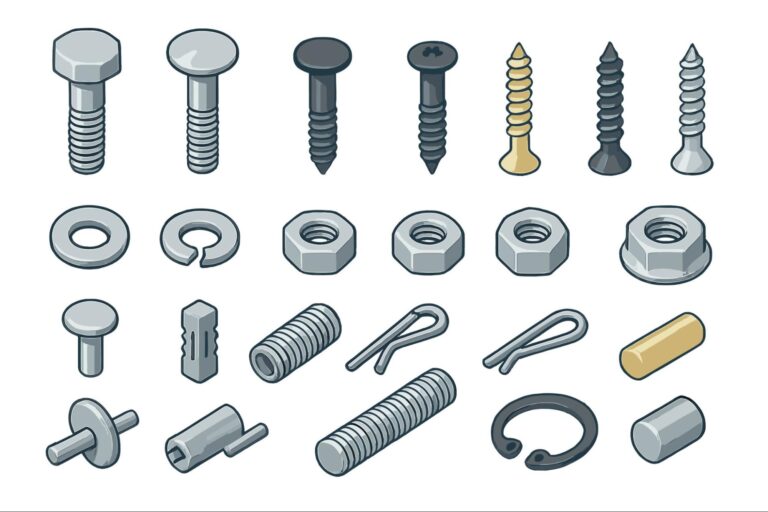Time to read: 8 min
Remember the days of flip phones and physical alpha-numeric keys, where you pressed physical buttons to enter phone numbers and send text messages? We’ve come a long way since then, with modern smartphones and replacing buttons with capacitive touchscreens.
Despite the technological advances, there’s something I miss about those physical keys. Maybe it was the ability to message friends without looking at the screen, just by feeling around the keys (perfect for secretly texting under my desk while pretending to pay attention in class). The tactile feedback was something I took for granted. New devices are removing us further and further from the physical world.
As a result, haptic technology can be incorporated to provide us tactile feedback and give us that sense of touch we’re missing. Beyond purely audio or visual cues, haptic feedback can increase the usability of our devices. From virtual reality to surgical robotics to touchscreens, haptics improve the both the realism and the precision of our interactions—imagine feeling around a virtual keyboard without looking or controlling a mechanical arm without knowing how much force with which you are grasping!
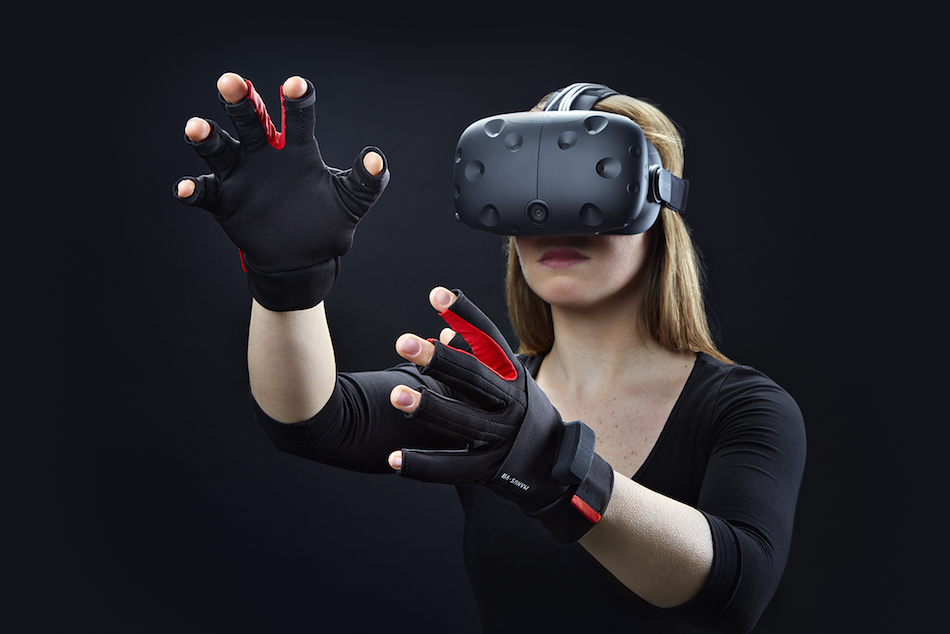
The Manus VR Glove is one of many devices providing haptic feedback for a more immersive experience.
In this article, we’ll provide a snapshot overview of haptic feedback, and then we’ll explore a common method used to incorporate haptic technologies, so you can apply it to your own devices!
An Overview of Haptic Feedback
Haptics is a very broad field—any kind of technology that simulates the sensation of touch can be grouped under the umbrella of haptics. From simple button depressions to force sensors and actuators that simulate resistance, texture, weight, shape, and tension, this category can get quite complex. Haptics can extend from feeling the mere presence of an object to relaying how a surface feels (rough, smooth, springy, etc) and having a sense of how the object behaves in space (close your eyes, and you should still be able to tie your shoelaces).
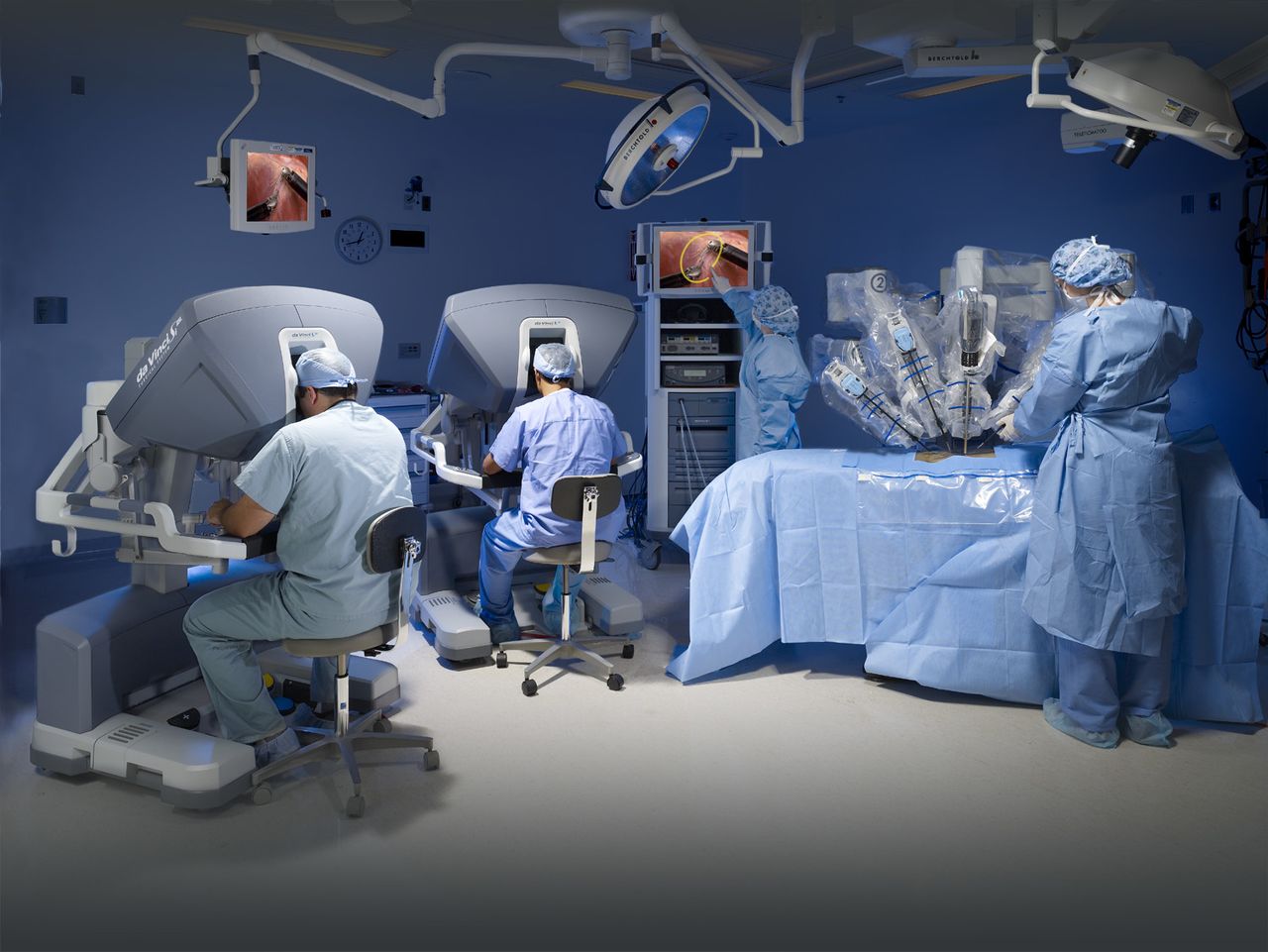
Intuitive Surgical’s da Vinci Surgical System employs advanced haptics allowing a surgeon to feel what he/she is doing despite the separation from the patient.
For example, if you hold a rock in your hand, pressure on your skin tells you the rock is present, and you also have sensory information from your fingertips about the roughness on the surface. But what about the sensory information from the muscles in your arm (the stretch receptors) and the weight of the rock, or where it is in relativity?
As you can see, our study of haptics can grow very large in scope and we could get into Ph.D-level research territory very quickly! To narrow our scope, the main category we’ll explore in this article is haptic technology through vibration motors. This will serve as a good foundation and a springboard for when you’re ready to get more sophisticated with haptics.
Vibration Motors
With modern applications like touchscreens or gaming controllers, the common method used to provide feedback is vibration. Just like a flashing light or an audio cue, vibration is an effective indicator that an action has been registered. As is always valuable to mechanical design engineers, we’ll categorize the types of vibration motors by form factor. We have two main forms: ERM (Cylindrical) and Coin vibration motors.
ERM (Cylindrical) Vibration Motors
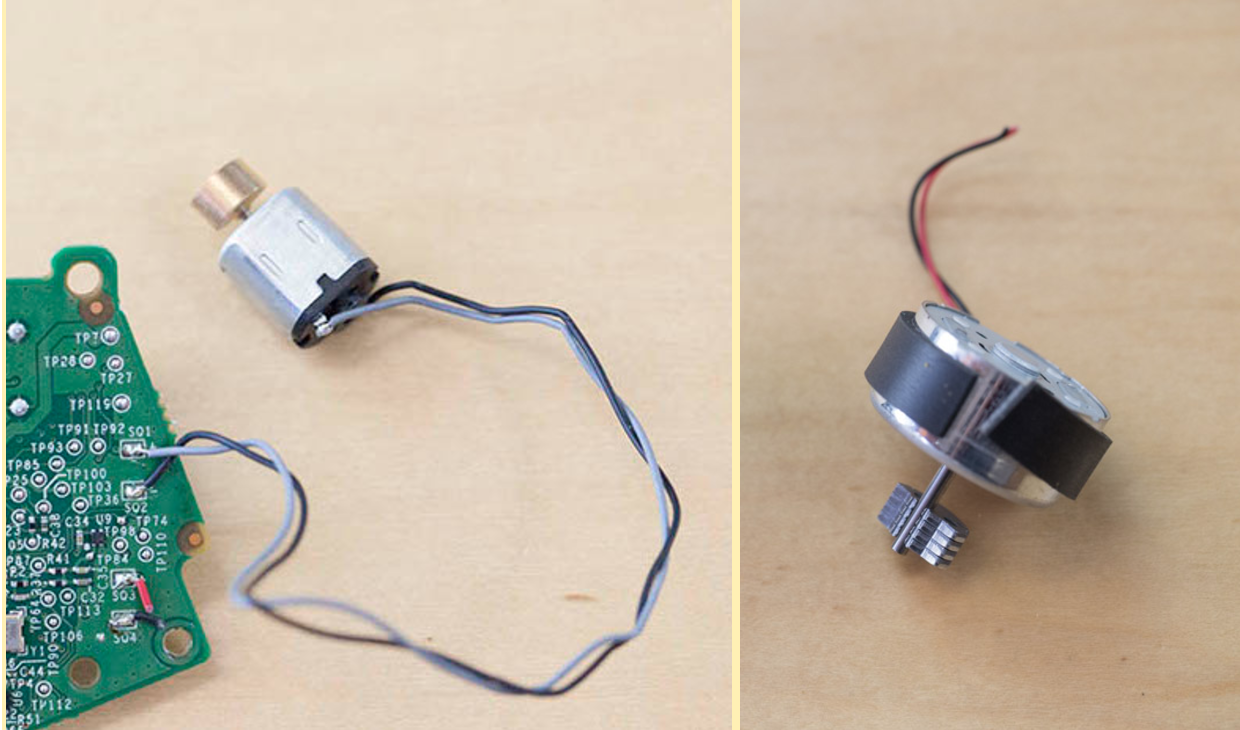
ERM motors operate via a rotating, off-centered mass.
ERM (Eccentric Rotating Mass) vibration motors are simply motors that spin a mass offset from the center of rotation. They have a cylindrical form factor, and the mass and rotating shaft are often exposed.
Advantages/Disadvantages of ERM Vibration Motors
The advantages of ERM vibration motors are that they’re inexpensive and offer relatively strong vibrations when compared to coin vibration motors. You can also find ERMs with the offset mass encapsulated or enclosed for protection.
The tradeoffs come through the size, since they’re not usually as compact as the coin form factor. Additionally, you need to consider how to securely mount the cylindrical form factor within your device (especially since you have a free spinning mass whipping around, you’ll want to make sure the motor is bolted down, and there’s no interference for the spinning mass).
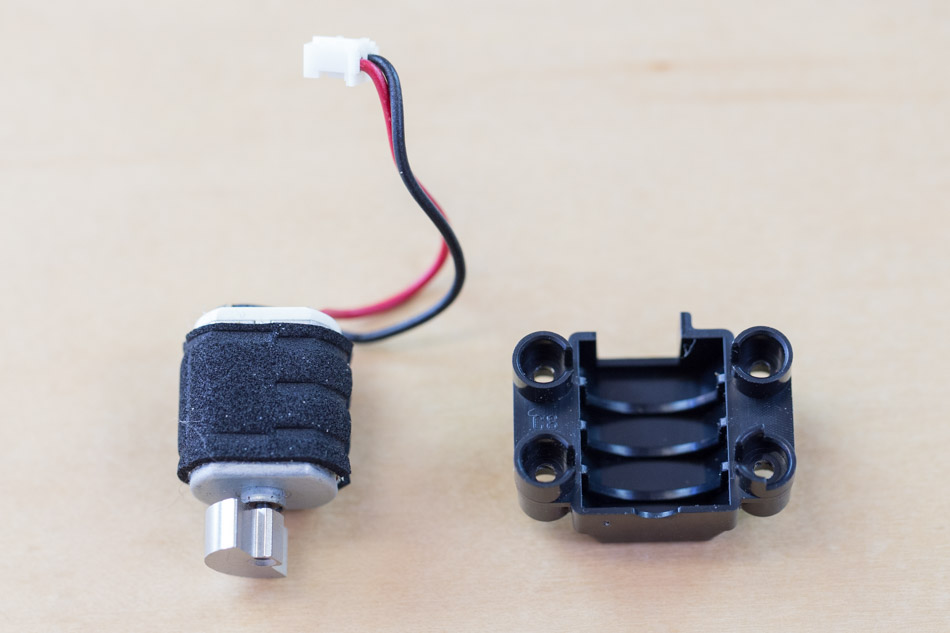
Mounting techniques include fabricating and incorporating a housing to fasten down the motor.
Examples of ERM Vibration Motors
Some common applications include gaming controllers, cellphones, wearables, medical devices and automotive touch screens.
Coin Vibration Motors
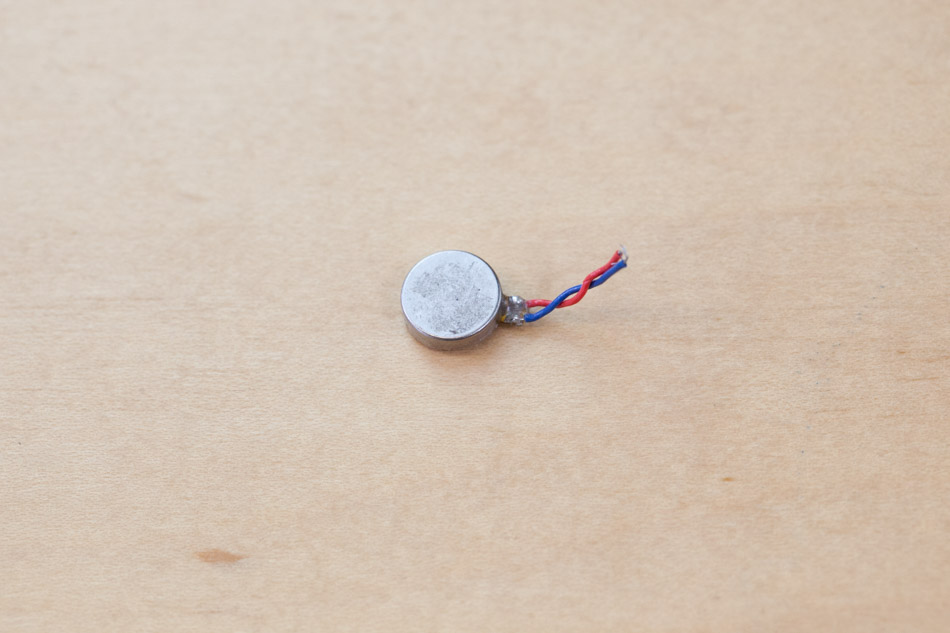
Coin vibration motors operate via ERM mechanism, but are often more compact!
In addition to the cylindrical ERM vibration motors, the other form factor we have are coin vibration motors. These are flat, “pancake” (a common nickname) components.
Coin vibration motors also employ a rotating offset mass, only in a flat and smaller form factor that is fully enclosed, rather than exposed. Instead of a longer cylindrical shaft with a long axle and offset mass, the shaft is very short, and the interior contains a flat mass that is offset from the center of rotation (so that it can fit in the coin shape). Thus they are categorically also ERM motors by mechanism; however, it’s common industry practice for the exposed cylindrical vibration motors to be called ERM vibration motors and the coin form factor to be called Coin, or Pancake, vibration motors.
Advantages/Disadvantages of Coin Vibration Motors
Due to their more compact form factor, use Coin vibration motors for smaller devices or when space is a constraint. Due to their shape, these vibration motors are very easy to mount, since they have an adhesive backing that you can stick to your device. With their smaller size, however, vibrations are often not as powerful as ERMs in the cylindrical form factor.
Examples of Coin Vibration Motors
Coin vibration motors are great for small devices like wearables (check out this wearables teardown comparison for an example) or connected jewelry.
Linear Resonant Actuator (LRA) Vibration Motors
While our focus has been on vibration form factors, there is one more major category worth mentioning: LRA (Linear Resonant Actuator) vibration motors. In terms of form factor, they could be classified under the same shape as coin vibration motors, since most of them look just like coin vibration motors on the outside.
The mechanism, however, is not ERM. Instead of a rotating offset mass (where electric current moves in one direction, and the rotor spins in one direction), LRA vibration motors incorporate a linearly oscillating mass undergoing simple harmonic motion. The mass moves back and forth, so this change of direction requires a changing electrical signal that has an associated frequency: an AC signal.
Take a look at this great video for more information about the difference between ERM and LRA vibration motors! Note that while many LRAs take on the coin form factor, LRA refers to the mechanism of vibration, so in some cases, the shape can be altered, depending on the housing. A great example is Apple’s Taptic Engine, which is Apple’s own custom LRA vibration motor:
Apple’s Taptic Engine, used in the Apple Watch, is a custom LRA vibration motor. While it is not the traditional coin form factor, it remains flat and compact.
Advantages/Disadvantages of LRAs
LRAs offer the same advantage as Coin vibration motors, due to compact form factor and the ability to also install via an adhesive backing. While they are generally more expensive, LRAs are very efficient and allow for more precise and complex vibrations for an improved experience. Unlike ERMs, the vibration oscillates linearly (think up and down, compared to ERMs, which are all around!)
LRAs are a little more difficult to incorporate. Where ERMs use a DC signal, LRAs require an AC signal, and the frequency range at which this motor resonates is a lot narrower, so it requires a more precise signal to achieve optimal vibration. Thus it is often helpful to incorporate an LRA driver.
Check out this article for more information on AC vs. DC motors.
Examples of LRAs
A common example of where LRAs are used are with newer smartphones and a lot of Apple products with Apple’s Taptic Engine. From the recent generation iPhones to the Apple Watch to the latest Macbook trackpads, LRAs help simulate a more subtle haptic feedback.
 Many of Apple’s latest products incorporate LRAs for haptic feedback.
Many of Apple’s latest products incorporate LRAs for haptic feedback.
Summary of Different Vibration Motors
So are we classifying by form factor, or by mechanism type? And why the confusing standard for naming? Well, here’s the breakdown to set everything straight!
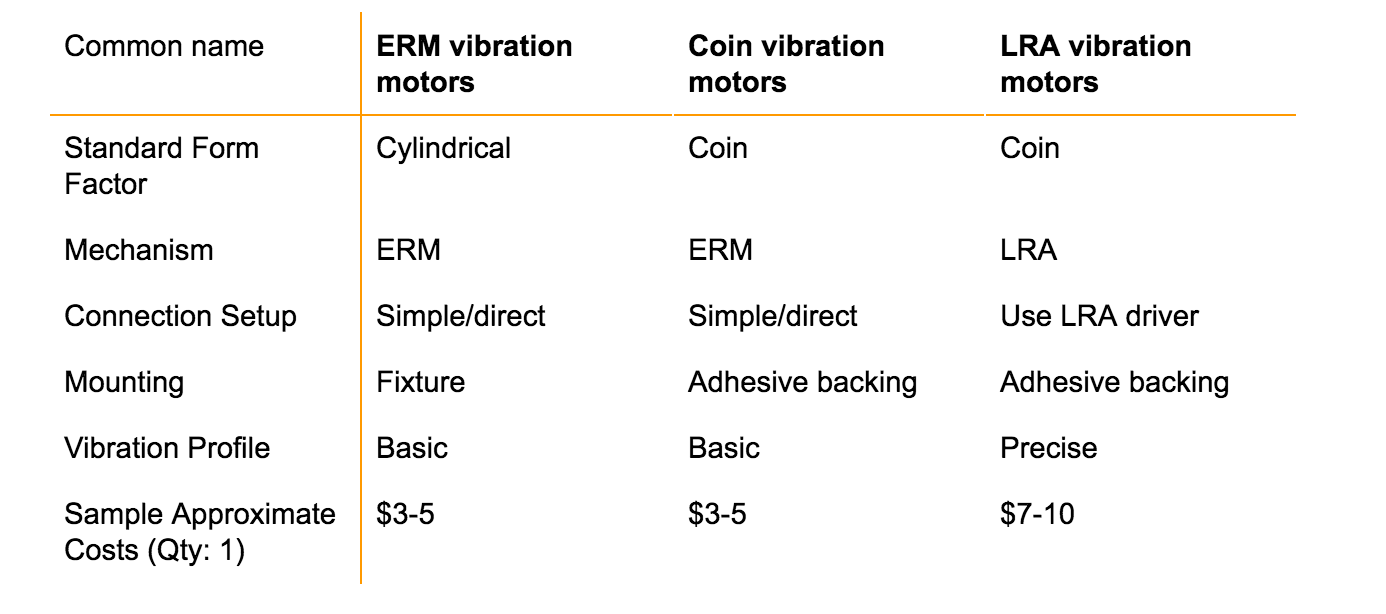
Tips for Incorporating Haptic Technology into Your Designs
Now that you know the common types of vibration motors, how do you apply them to your devices? We’ll give you a few tips!
Sourcing Vibration Motors
The range of vibration motors can be easily found at many of the usual electronics sources, including Digi-key and Precision Microdrives. For earlier stages in the product development lifecycle, these are great resources.
After initial prototyping, it’s a good idea to go to a manufacturer’s website and contact their sales representatives. They can then give you insight on which motors are approaching their end-of-life as products, and which new motors will soon become available.
By doing this research, you can design your device with a particular vibration motor in mind and not worry that a given component will go out of production, which would result in high switch-costs + a massive headache!
Strength of Vibration
A common way to increase the strength is by increasing the force from the vibration motor. For ERMs, this means increasing the speed by inputting a higher voltage. You can also use a larger motor for a larger mass.
Note, however, that for ERMs, varying the speed (which affects the strength) also impacts the frequency of vibration. For more precision, LRAs decouple amplitude and frequency, so you can vary amplitude without affecting frequency.
Mounting Vibration Motors
Vibration motors often sit on/within an enclosure or directly on PCBs. You can easily 3D print an enclosure to house the vibration motor and to mount it. If mounting onto a PCB, there are often options for soldering via through-hole pins. In the case of Coin and LRAs, you can just use the adhesive backing.
 Techniques for mounting an ERM vibration motor include creating a housing (left) or securing directly on the PCB (right).
Techniques for mounting an ERM vibration motor include creating a housing (left) or securing directly on the PCB (right).
Driving/Powering Vibration Motors
For ERM and Coin vibration motors that take in DC signal, you can directly apply power from a battery. For haptics, however, where you are interested in responding to an input, you might want to hook up the vibration motor to a microcontroller to control not only on/off, but also amplitude or vibration profile. For LRAs, which take in an AC signal, you very likely would need to incorporate an LRA driver to account for the optimal operating frequency.
Haptics Extended Universe
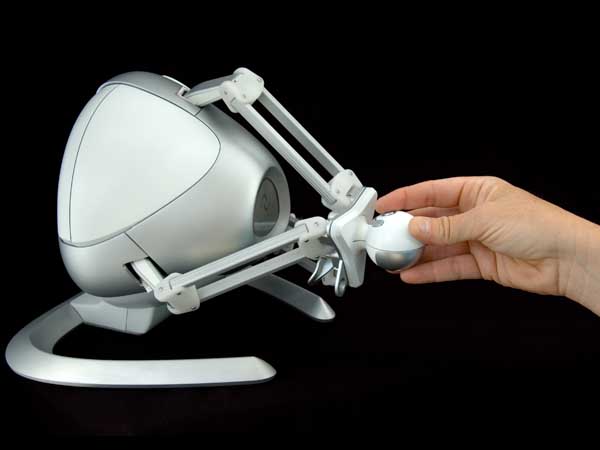 The Novint Falcon (announced 2007) was a controller that simulated texture, weight, and movement for a realistic virtual experience.
The Novint Falcon (announced 2007) was a controller that simulated texture, weight, and movement for a realistic virtual experience.
We’re only scratching the surface of haptic feedback in this article. Vibration motors are one method of providing feedback. We can go much simpler—think using a dome switch for actual physical buttons—or much more complex—think new virtual reality controls that use shear forces—to fine-tune the type and profile of haptic response.
Even within the category of vibration motors, we can get quite complex and specific with the parameters and profile of vibration. Just take a look at Apple’s Taptic Engine for an example of how much refinement can be added. Depending on how simple or complex you decide to go, incorporating haptic feedback can allow your device to make huge strides in terms of user experience and effectiveness.
Just the First Step!
There are many ways to incorporate haptic feedback into your devices, beyond the ones we covered. Hopefully, the examples described here will serve as a springboard, so you can use haptics in your designs right away. It’s a subtle, yet powerful tool to make your products more effective and intuitive, whether to make virtual reality more immersive, provide more precision for hand-held tools, or just to improve the user experience. The samples here are just the basic ones, but there are many exciting haptic technologies emerging to better simulate the sense of touch and make interactions more realistic!










